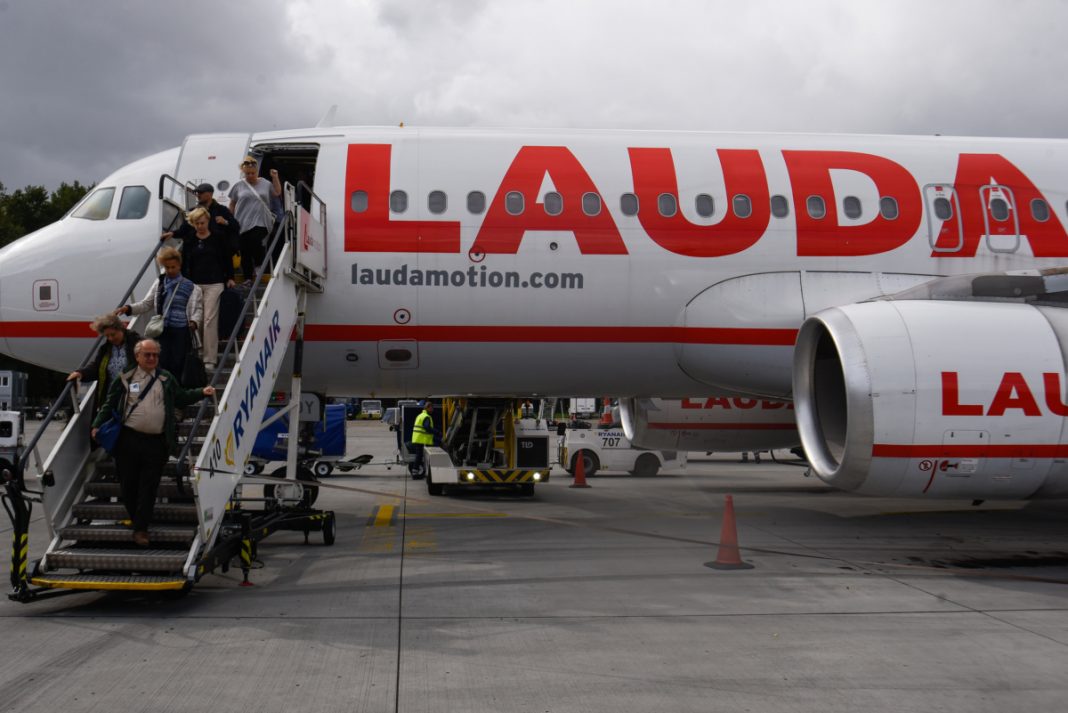The emergency evacuation of a Lauda Airbus A320 at London Stansted in March 2019 was unnecessary and carried a risk of serious injury the UK’s Air Accident Investigation Board (AAIB) reported today. The risk was identified due to an engine still running according to the AAIB’s final report into the incident.

Emergency evacuations of aircraft are usually only necessary in extreme circumstances such as fire, severe damage to the plane, or a crash. On March 1st, 2019, a Lauda Airbus A320 was evacuated in London Stansted after a rejected takeoff prompted by a contained engine failure. However, the AAIB today reported that the evacuation was unnecessary.
What happened at Stansted?
The incident in question took place on March 1st, 2019. OE-LOA, a Lauda Airbus A320, was due to fly from London’s Stansted Airport to Vienna in Austria. The flight departed the stand as usual and taxied to the runway.
Upon reaching the runway, the aircraft powered up to take off. However, after a loud bang was heard and the plane tended towards the left, the pilots decided to abort the takeoff. In the report issued today, the AAIB concluded that the aircraft had suffered a contained engine failure when one or more high-pressure compressor blades broke free.

Evacuation on the runway
After the aircraft had come to a stop on the runway, the airport’s fire service attended the scene. As there were no signs of fire, the pilots decided to return to vacate the runway under the power of the remaining right engine. The pilots were preparing to move the aircraft when they noticed an indication that the left forward door was open.
Glancing out of the window, the pilots saw an inflated slide, along with passengers evacuating the aircraft. The door was opened at 20:07:21, according to the report. The pilots contacted the cabin crew (who had initiated the evacuation) to query the event before turning the right engine off at 20:09:38.
As such, passengers were evacuating the aircraft for two minutes and 17 seconds before the engine was shut down. Aircraft are required to be evacuated in 90 seconds during certification. However, it is believed that in this instance, the evacuation was slowed down as passengers exited the aircraft with luggage.

Risk of serious injury
The AAIB identified that there was a serious risk of injury as a result of evacuating the aircraft while the engine was running. Thankfully, nobody was sucked into the engine inlet. However, several passengers were injured after being knocked over by air exiting the rear of the engine. In total, ten were injured, with two being taken to hospital.
The AAIB reported that none of the circumstances that would warrant a member of cabin crew ordering an evacuation of the aircraft. They also reported,
“A combination of factors combined to overwhelm the SFA and cause her to command the evacuation over the PA.”
This article summarises the key points in the AAIB’s report, which can be read in full here. Simple Flying has contacted Ryanair for comment regarding the report.
What do you make of the AAIB’s findings? Let us know your thoughts in the comments!
[ad_2]
Source link


